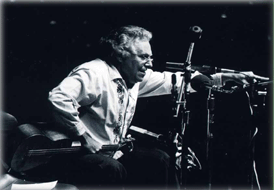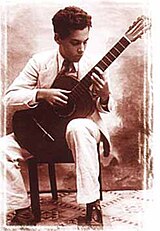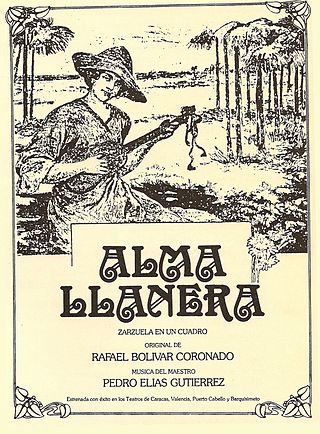
Several styles of the traditional music of Venezuela, such as salsa and merengue, are common to its Caribbean neighbors. Perhaps the most typical Venezuelan music is joropo, a rural form which originated in the llanos, or plains.
Antonio Lauro was a Venezuelan musician, considered to be one of the foremost South American composers for the guitar in the 20th century.
Alirio Díaz was a Venezuelan classical guitarist and composer, considered one of the most prominent composer-guitarists of South America and an eminent musician. He studied with Andrés Segovia, and gave concerts all over the world.

Aquiles Nazoa was a Venezuelan writer, journalist, poet and humorist. His work expressed the values of popular Venezuelan culture.

Morella Valarino Muñoz, was a celebrated Venezuelan mezzo-soprano. She performed as a child under the pseudonym Morella Kenton, and as an adult as Morella Muñoz. She achieved national and international fame as a member of Venezuela's Counterpoint Quintet.
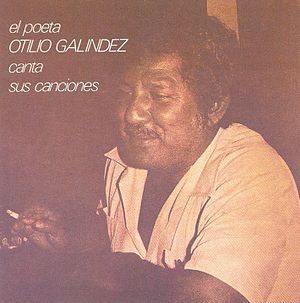
Otilio Galíndez was a Venezuelan songwriter and musician. He is best known for his Christmas songs (aguinaldos) like "La Restinga", even though he also composed popular Venezuelan waltzes, serenades, bambucos or joropos such as "Pueblos tristes", "Flor de mayo" and "Mi tripón". Many of his songs have been recorded by María Teresa Chacín, Ilan Chester, Simón Díaz, Pablo Milanés, Silvio Rodríguez, Mercedes Sosa, Cecilia Todd and Lilia Vera, among others.
Rodrigo Riera, was a Venezuelan guitarist and composer. He wrote a vital and important body of works for the guitar, inspired by and dedicated to the rich musical legacy of his region in the Lara state in Western Venezuela, displaying a loving nationalism that led him to be associated with the work of Antonio Lauro but with a technique that is more accessible to beginners and intermediate guitar players.
The cuatro is a family of Latin American string instruments played in Colombia, Puerto Rico, Venezuela and other Latin American countries. It is derived from the Spanish guitar. Although some have viola-like shapes, most cuatros resemble a small to mid-sized classical guitar. In Puerto Rico and Venezuela, the cuatro is an ensemble instrument for secular and religious music, and is played at parties and traditional gatherings.
The malagueña is a genre of folk music from eastern Venezuela, most notably from the island of Margarita. It is characterized by a solo vocal performance and typical accompaniment of a mandolin, a cuatro and a guitar, with a rhythm in 3/4 time.

Merengue is a musical form extended through all the Caribbean. The first occurrences of merengue in print in Venezuela are from scores of “dance merengue” of the second half of the 19th century. As a dance craze, merengue acquired popularity in Caracas during the 1920s. It is distinct from the vastly more popular Dominican merengue. Although they share the same name, the rhythms have very little in common, except that they were commonly written for partner dancing.
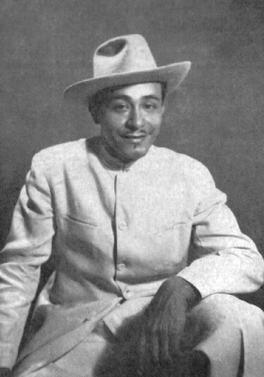
Ángel Custodio Loyola, was a Venezuelan singer and composer, known as a pioneer in the joropo genre. He wrote many popular songs, including "El Gavilán", "Tierra Negra", "Carnaval", "Sentimiento Llanero", "Catira Marmolereña", "Faenas Llaneras", and "Puerto Miranda". He is considered to have been one of the greatest exponents of llanera music.
Schola Cantorum de Venezuela is one of the most important choral societies belonging to the growing choral movement in Venezuela. The SCV began in 1967. Its founding members included composer Alberto Grau, a Venezuelan composer and conductor born in 1937 in Barcelona, Spain; and Venezuelan composer Ana Rugeles among others. Currently, the choir is conducted by María Guinand and Ana María Raga, with the assistance of young conductors Pablo Morales Daal and Victor Leonardo Gonzalez. Schola Cantorum de Venezuela works under the sponsorship of the Fundación Schola Cantorum de Venezuela, a Non-Profit Organization that oversees several other choirs such as: Cantoría Alberto Grau, Pequeños Cantores de la Schola and Schola Juvenil. Together they provide a complete system to promote and develop choral music in Venezuela.
Mariano Díaz Bravo is a Chilean-born Venezuelan photographer, graphic designer and writer, best known for his contributions to the study and promotion of Venezuelan folk art. In 1993, he received the Premio Nacional de Arte Popular "Aquiles Nazoa", Venezuela's highest honor for folk artists and folk art promoters.

The cuatro of Venezuela has four single nylon strings, tuned (ad'f#'b). It is similar in shape and tuning to the ukulele, but their character and playing technique are vastly different. It is tuned in a similar fashion to the traditional D tuning of the ukulele, but the A and B are an octave lower. Consequently, the same fingering can be used to shape the chords, but it produces a different inversion of each chord. A cuatro player is called a cuatrista.

In Venezuela, since the opening of the Teatro Caracas and, earlier, the Teatro Maderero, there has been a great lyrical tradition ranging from serious opera to operetta, zarzuela, and Spanish musical reviews.
Flores Chaviano is an accomplished Cuban composer, guitarist, professor and orchestral conductor that has achieved great international recognition.

David Ramón Sánchez Palomares was a Venezuelan poet, born in Escuque. In 1975 received the National Prize for Literature; in 2006 the first Víctor Valera Mora International Prize for Poetry; and in 2010 the Ibero-America Award for Literature.
National Prize of Plastic Arts of Venezuela is an annual award given to various artists from that country, specifically the field of drawing, printmaking and drawing pictorial. It is one of the National Culture Awards.
Cristina Merchán was a Venezuelan artist initially trained as a painter, and later became known for her ceramics.

Alirio Rodríguez was a Venezuelan painter and visual artist. He was born in El Callao, Venezuela, and died in Caracas, Venezuela. His art was widely acclaimed in his native Venezuela and abroad, winning him multiple awards and recognitions as one of the top Venezuelan plastic artists of the 20th century.
